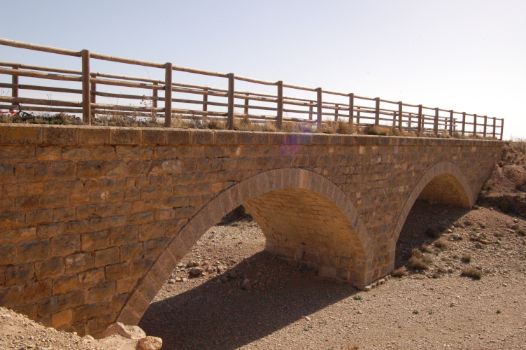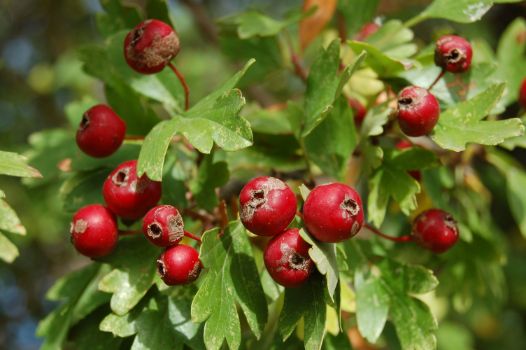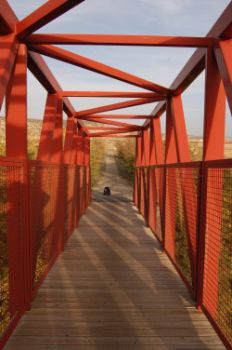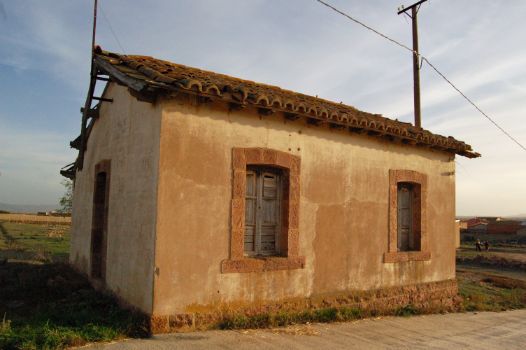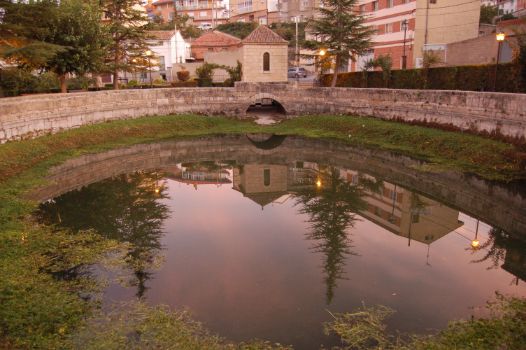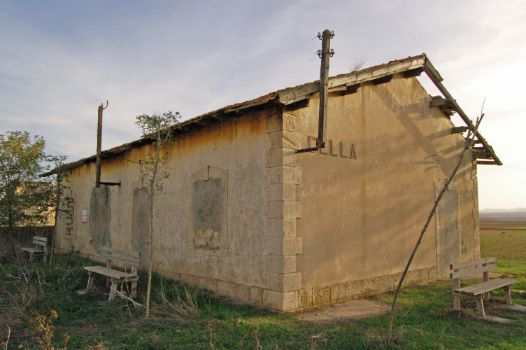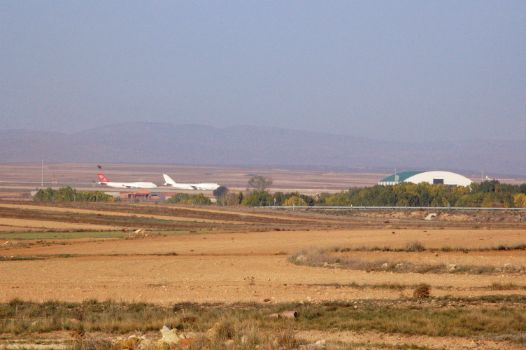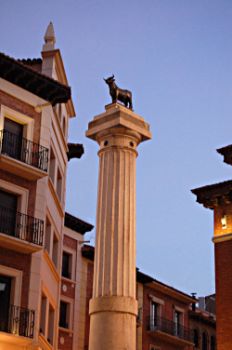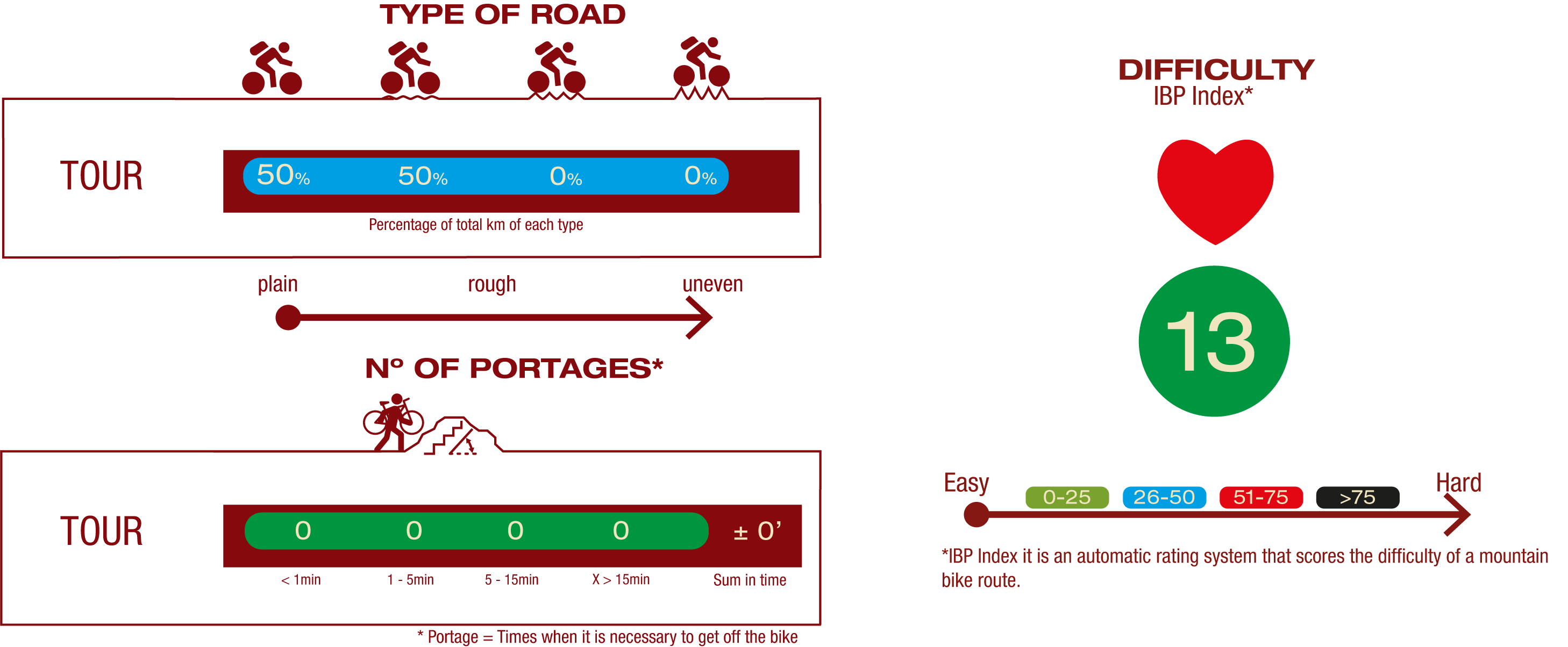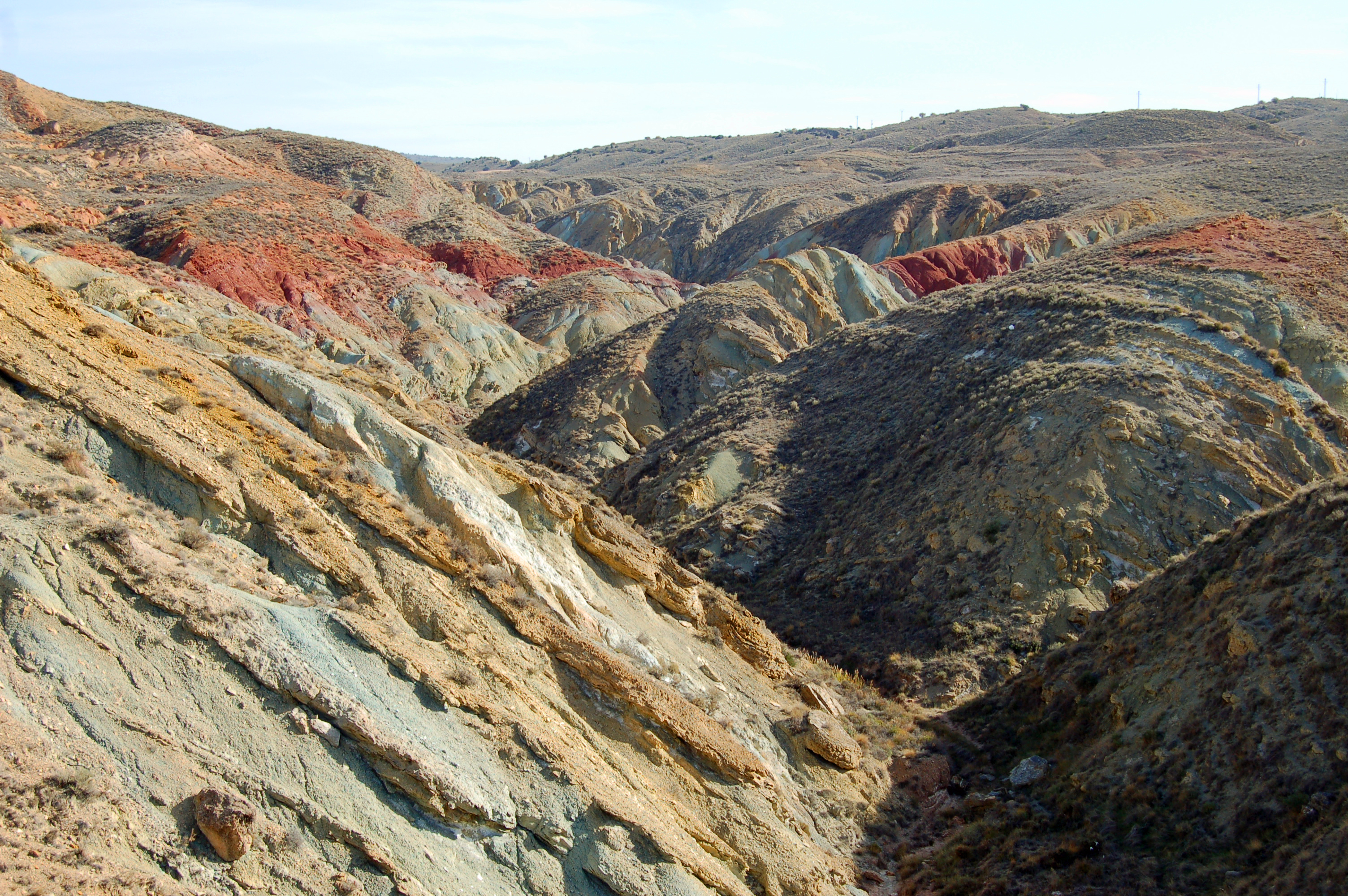
Net of Natural
Trails

Stage: Santa Eulalia - Teruel
Description
Walking through the lands of El Cid
Sandstone, clay and limestone make up the rustic slopes of the broad Jiloca valley, home to a biodiversity typical of steppe habitats. Looking closely, we might encounter specimens of stone curlews, larks and little bustards among the thickets. This stage is a great adventure for those who decide to follow it, and it also has a spectacular finish, arriving in the UNESCO World Heritage Site of Teruel, a city famed for its Mudéjar architecture.

The old Santa Eulalia station, located on the A-1511 road towards Pozondón, marks the starting point of this stage of the Santander-Mediterranean Nature Trail as we set off for Teruel.
The route begins by crossing a steppe with a number of cultivated fields, traversed by rural roads, small gullies, streams and seasonal streams. We pass near some isolated farmhouses until it we reach a village known as Las Granjas, next to an irrigation channel that waters the cornfields and poplar groves of Cella. Immediately, the trail crosses an asphalt cattle road and a long section shared with light vehicle traffic begins.

Those who would like to visit the town of Cella can take a two-kilometre detour. Perched atop a hill and visible from the trail, it offers impressive panoramic views. Those who do will have no regrets, with the chance of losing oneself in the narrow medieval streets or the Plaza del Ayuntamiento, following in the footsteps of the famed medieval knight El Cid. The source of the River Jiloca is also nearby, at a large artesian well in the town. This well is one of the largest of its kind in Europe and was built in the 12th century by the Templars.
Returning to our route, the Santander-Mediterranean Nature Trail continues through repopulated poplar groves that show where the natural course of the river, now almost dry, used to go. This section still preserves the remains of some bridges that used to serve the old agricultural roads over the Ojos Negros mining railway line, today the Ojos Negros Greenway Nature Trail with which we share a route on this stage. At the end of an irrigated section, there is a level crossing as the trail enters Cella by a roundabout, before passing an old barn that still stands alongside an industrial fence.

Cella station, complete with a picnic area, offers the chance to take a break to recharge before the route continues in the direction of Caudé over dry land, approaching the A-23, known as the Mudéjar motorway, and the slopes of the valley. Finally, we cross under the N-234 and then over the railway track via a metal overpass that offers excellent views.
The small parish of Caudé sits alongside the route and from the station you can make a brief stop in the village to fill your water bottle from the drinking fountain beside the church. There are some indications that we are approaching the end of our adventure a flat stretch that will lead the traveller to cross the A-23 motorway in the direction of Concud, gently descending towards the fertile plain of the Alfambra River. It continues through the Cerrillo de Casa Roya to the station of Teruel, located five kilometres away from the capital of Teruel, and the end of this Santa Eulalia-Teruel stage of the Santander-Mediterranean Nature Trail. It is well worth walking the distance between the old station and the city, a UNESCO World Heritage Site for its spectacular Mudejar architecture.
Managing Entities
Sites of Interest
Puntos de interés
Culture
- Estación de Santa Eulalia
- Estación de Teruel
- Masía Serrano
- Estación de Cella
- Masía de Lanzuela y Masía Boleas
- Encinas (reforestación tierras agrarias)
- Ermita de la Virgen del Molino
Hydrography
Information
Infrastructure
Municipality
Orography
Hostel
Vegetation
Passport
Profile
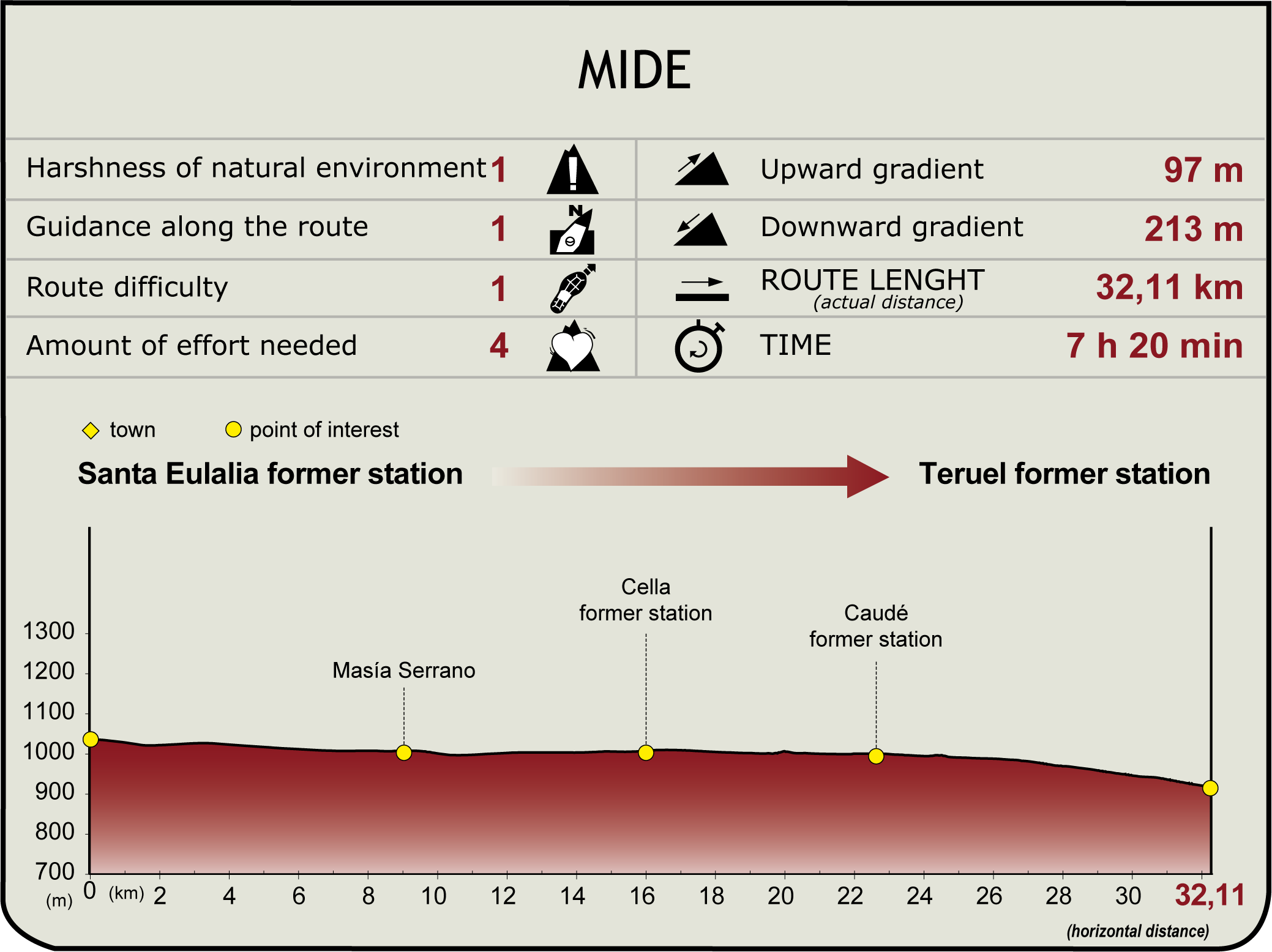
(Calculated according to the MIDE criteria for an average excursionist with a light load)
Highlights
>h3>Ojos Negros Railway
The Ojos Negros was an old iron mine located at the foot of the Sierra Menera in the province of Teruel. A long narrow gauge railway line was used to connect the mine over 200km to the steelworks in Sagunto. Curiously, before its construction, there was already another broad-gauge railway line prepared for passenger transport which, later on, would continue to run parallel to this one. However, the mining company thought it was more profitable to build a new line exclusively for ore transport. After several decades of intense use, it was forced to ask Renfe if it could use its track to solve the bottle neck caused by its own insufficient method of transport. The line was closed in 1972. Ten years later, the Spanish mining crisis occurred, which resulting in the collapse of the mining company the metal industry of Sagunto, which until then had been thriving.
Teruel
Although the city of Teruel was founded during the Christian conquest in 1171, remains have been found that indicate that this enclave was inhabited much earlier. This is confirmed by the Iberian settlement known as Turboleta, in Alto Chacón, as well as by some documents found which also prove the existence of a Moorish fortress in the upper part of the present-day city, known as Tirwal.
Teruel has lived through any number of historical conflicts, from the Middle Ages to the War of Independence and the Carlist Wars, and even the Spanish Civil War, with one of the bloodiest battles of that conflict fought here. The main economic activity is tourism, largely thanks to the city's Mudejar architecture, for which it was declared a World Heritage Site by UNESCO in 1986. The most outstanding examples are the Tower of San Pedro and the Cathedral, both from the 13th century, and the Tower of El Salvador and the Tower of San Martín, from the 14th century.
In addition, in the 20th century an architectural style inspired by the Mudejar style emerged, known as neo-Mudejar, the most representative examples of which are the door on the south façade of the Cathedral and the staircase linking the historic centre with the railway station.
Local festivals take place in the first fortnight of July, with another celebration held on the weekend closest to 14 February in memory of Los Amantes de Teruel, the ill-fated love story of Isabel de Segura and Diego de Marcilla.
Multimedia
Downloads
GPS Downloads
Documents
Cyclability
SAFET RECOMMENDATIONS
There are several road crossings, a multitude of road junctions and several stretches shared with motor vehicles.
GENERAL RECOMMENDATIONS
- Find out about the technical aspects of the route and the weather on the day.
- Take care of the environment. Take care not to disturb animals or damage vegetation. Respect private areas.
- You must give priority to pedestrians and comply with general traffic rules.
- The environment in which you will be riding is open, free to move around and an area where many activities are carried out (sporting, forestry, livestock and agricultural activities).
- Always have an understanding, prudent, responsible and respectful attitude.



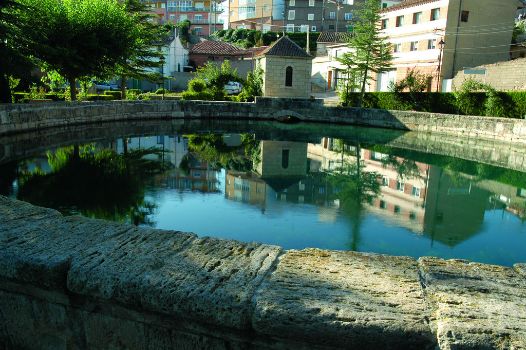_tcm30-146064.jpg)
